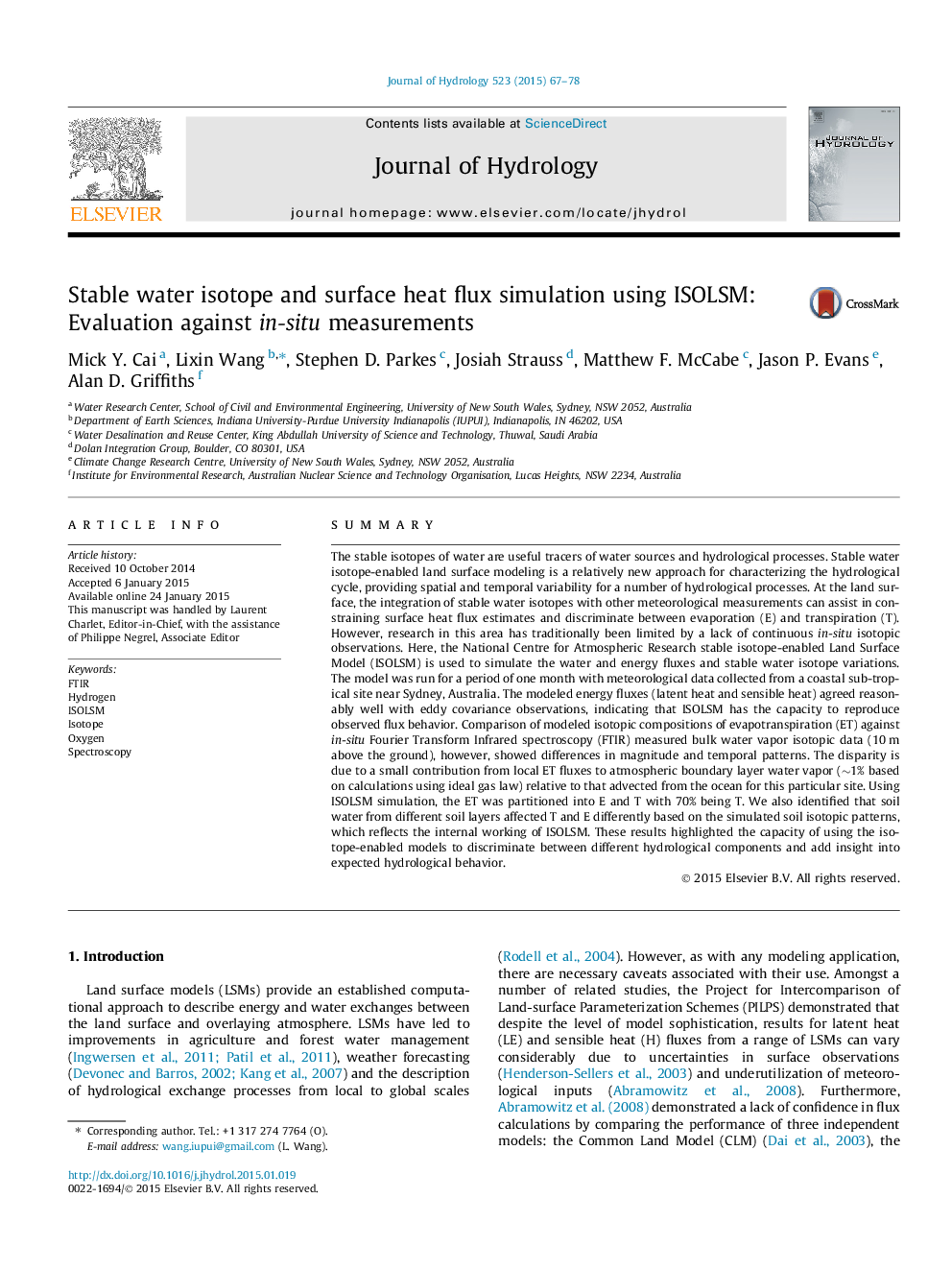| کد مقاله | کد نشریه | سال انتشار | مقاله انگلیسی | نسخه تمام متن |
|---|---|---|---|---|
| 6411646 | 1629927 | 2015 | 12 صفحه PDF | دانلود رایگان |

- An isotope-enabled land surface model is evaluated with high-resolution data.
- Sensitivity is performed to identify error sources in parameters and input variables.
- The model reproduces observed surface fluxes.
SummaryThe stable isotopes of water are useful tracers of water sources and hydrological processes. Stable water isotope-enabled land surface modeling is a relatively new approach for characterizing the hydrological cycle, providing spatial and temporal variability for a number of hydrological processes. At the land surface, the integration of stable water isotopes with other meteorological measurements can assist in constraining surface heat flux estimates and discriminate between evaporation (E) and transpiration (T). However, research in this area has traditionally been limited by a lack of continuous in-situ isotopic observations. Here, the National Centre for Atmospheric Research stable isotope-enabled Land Surface Model (ISOLSM) is used to simulate the water and energy fluxes and stable water isotope variations. The model was run for a period of one month with meteorological data collected from a coastal sub-tropical site near Sydney, Australia. The modeled energy fluxes (latent heat and sensible heat) agreed reasonably well with eddy covariance observations, indicating that ISOLSM has the capacity to reproduce observed flux behavior. Comparison of modeled isotopic compositions of evapotranspiration (ET) against in-situ Fourier Transform Infrared spectroscopy (FTIR) measured bulk water vapor isotopic data (10Â m above the ground), however, showed differences in magnitude and temporal patterns. The disparity is due to a small contribution from local ET fluxes to atmospheric boundary layer water vapor (â¼1% based on calculations using ideal gas law) relative to that advected from the ocean for this particular site. Using ISOLSM simulation, the ET was partitioned into E and T with 70% being T. We also identified that soil water from different soil layers affected T and E differently based on the simulated soil isotopic patterns, which reflects the internal working of ISOLSM. These results highlighted the capacity of using the isotope-enabled models to discriminate between different hydrological components and add insight into expected hydrological behavior.
Journal: Journal of Hydrology - Volume 523, April 2015, Pages 67-78